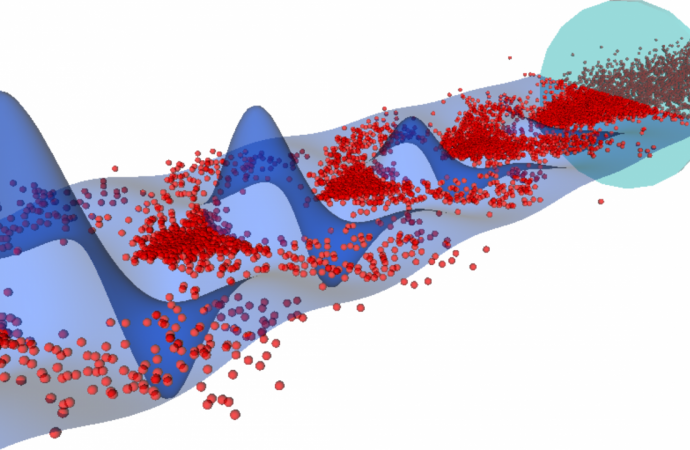The AWAKE experiment at CERN made a breakthrough at the end of last year. A long-term technology-development project, its aim is to drag electrons through a plasma, behind a beam of protons, and provide a route to higher energies than the Large Hadron Collider
High-energy particle beams have multiple uses. In general, a controlled beam of high-energy particles can be used to smash things up – for example tumours or protons – or study them at high resolution, revealing the structure of molecules and materials, or indeed new fundamental physics such as the Higgs boson.
The challenges involved in producing a useful beam are various, and depend on the type of particle and what you want to use the beam for. One common limitation is the size and cost of the machine, and another is the steepness of the accelerating voltage gradient.
The accelerating voltage in a standard battery is 12 Volts. Mains power could get you 240 V. But many applications require millions or even billions of times this. The Large Hadron Collider (LHC), at the current frontier of high-energy physics, accelerates particles to 13 TeV, more than a million million times the energy that can be reached using the batteries hopefully included in your Christmas presents.
The voltage gradient is a measure of how much voltage can be applied over a certain distance. For many accelerators¹ this is what determines the size. Can you get from zero to a billion in a few centimetres, metres, or kilometres?
Over the last few years, several experiments have shown that very high gradients can be produced in plasmas. A plasma is a gaseous mixture of positively and negatively charged particles, usually produced at high temperatures. Old neon lamps contain plasma.
In normal circumstances, the positively and negatively charged particles in a plasma are evenly distributed. But firing a laser, or a beam of particles, into a plasma, disrupts this, producing regions in the plasma of strong net positive charge, and others of strong negative charge. The gradients produced between these regions, in the wake of the beam, can be fantastically strong, and can be used to accelerate particles.
Such acceleration has already been demonstrated using lasers and electron beams injected into plasma, and these offer the possibility of accelerators for medical and other applications that are much smaller and cheaper than any currently available. The goal of the Advanced Wakefield Experiment (AWAKE) at CERN² is to demonstrate plasma wakefield acceleration using a proton beam.
Proton beams are available at higher energies than lasers or electrons, and the most energetic are at CERN. AWAKE is using protons from the Super Proton Synchrotron (SPS), the final booster stage in the CERN accelerator complex before the LHC (see diagram).

The eventual aim of AWAKE is to demonstrate the feasibility of using such a high-energy proton beam in a plasma to accelerate an electron beam to higher energies than ever before.
It is possible you have heard of AWAKE because when beams first entered the experiment in June last year, there were some wild headlines in news outlets (such as the Express and The Sun), along the lines of CERN opening ‘portals’. The spurious excitement seems to have been caused by some pictures of a thunderstorm. Thunderstorms are really, really rare around the mountains of central Europe, and a particle physics experiment passing a milestone on schedule is even more unusual, so you can see how the journalists involved could have got confused.
Anyway, that was an important step forward, and at the end of LHC running in 2016, another major step was taken. The experiment for the first time measured the fact that the shape of the proton beam was being modulated, or shaped, by the plasma. This is a sign that indeed the desired very high gradient electric fields are being produced in the plasma – the first time this has been seen for a proton beam.
There is some more information, and a nice 360-degree view of the experiment, in this CERN news article. There is a long way to go, but 2016 was a good year for protons at CERN, and not just in the LHC.
Source: The Guardian

































Leave a Comment
You must be logged in to post a comment.